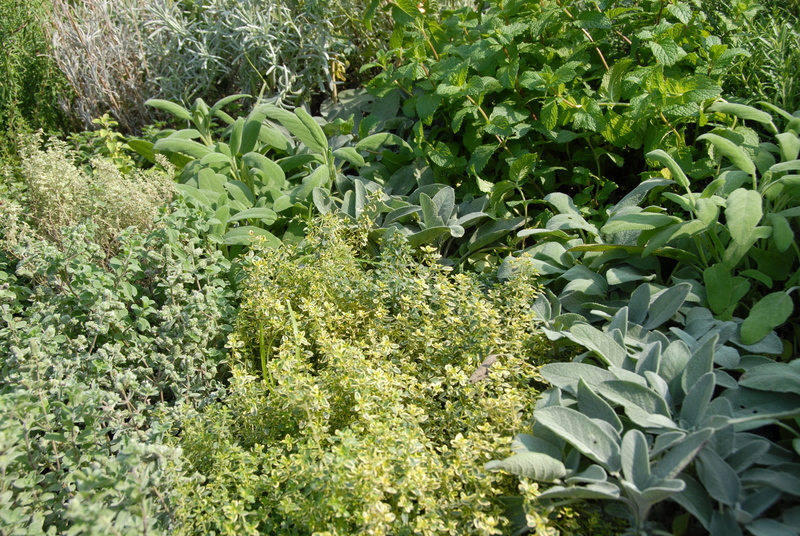Upright Planting Techniques
Posted on 03/07/2025
Upright Planting Techniques: The Ultimate Guide for Garden Enthusiasts
Introduction to Upright Planting Techniques
Upright planting techniques have revolutionized gardening by making it easier to maximize space, improve plant health, and create aesthetically pleasing garden arrangements. Whether you're an urban gardener with limited space or just looking to try something new, upright planting offers a versatile and efficient solution. This article will delve into various upright planting techniques, provide practical tips, and discuss the pros and cons of this gardening style.

Types of Upright Planting Techniques
Vertical Gardens
Vertical gardens involve growing plants upward using structures like trellises, wall-mounted planters, or even specialized vertical gardening systems. They're ideal for small spaces and can dramatically enhance the visual appeal of your garden.
Garden Towers
Garden towers are cylindrical structures filled with soil, allowing plants to grow out of the sides. These towers maximize your planting space and are perfect for growing herbs, strawberries, and other small plants.
Trellises and Arbors
Trellises and arbors are traditional methods for training plants to grow vertically. These structures are great for climbing plants like beans, peas, and some types of flowers. They provide support and help improve air circulation around the plants.
How to Get Started with Upright Planting
Choose the Right Plants
Not all plants are suitable for upright planting. Climbing plants, vining plants, and those with sprawling habits work best. Consider plants like tomatoes, beans, cucumbers, and ivy.
Select Appropriate Containers
Containers are crucial in upright planting. Make sure they're sturdy enough to support the weight of the plant and soil. Options include hanging baskets, wall-mounted planters, and stacked pots.
Soil and Watering Considerations
Ensure you use a high-quality potting mix that provides good drainage and nutrients. Watering can be more challenging with upright planting, so consider drip irrigation systems to ensure consistent moisture levels.
Tips for Successful Upright Planting
Optimize Sunlight Exposure
Position your upright planters in locations where they'll receive adequate sunlight. Most vegetables and flowering plants require at least 6-8 hours of sun daily.
Use Mulch Wisely
Mulch helps retain moisture and reduces the risk of weeds. Apply a layer of mulch around the plants to help maintain consistent soil conditions.
Regular Maintenance
Upright plants often require more frequent pruning and training. Regularly check for pests and diseases, and trim back any overgrowth to keep your plants healthy.
Pros and Cons of Upright Planting Techniques
Pros
- Space Efficiency: Ideal for small gardens, patios, and balconies.
- Improved Air Circulation: Reduces the risk of diseases.
- Enhanced Aesthetics: Creates visually appealing garden arrangements.
- Ease of Access: Makes harvesting and maintenance simpler.
Cons
- Initial Cost: Setting up structures and containers can be expensive.
- Maintenance: May require more frequent pruning and monitoring.
- Limited Plant Options: Not all plants are suitable for upright planting.

Key Takeaways
1. Upright planting techniques offer a versatile and efficient solution for maximizing gardening space.
2. Vertical gardens, garden towers, and trellises are popular methods for growing plants upright.
3. Choose appropriate plants, containers, and ensure proper soil and watering to succeed.
4. Regular maintenance, including pruning and pest control, is essential for healthy plants.
5. While upright planting has many benefits, it also comes with some drawbacks like initial costs and maintenance requirements.
Conclusion
Upright planting techniques provide an excellent opportunity to make the most of limited space and create beautiful, healthy gardens. By carefully selecting the right plants, containers, and maintaining a consistent care routine, you can enjoy a bountiful and visually stunning garden. Whether you're a novice or an experienced gardener, upright planting offers endless possibilities for innovation and creativity in your gardening endeavors.
Embrace the vertical gardening trend and transform your space into a thriving oasis of green with upright planting techniques!



